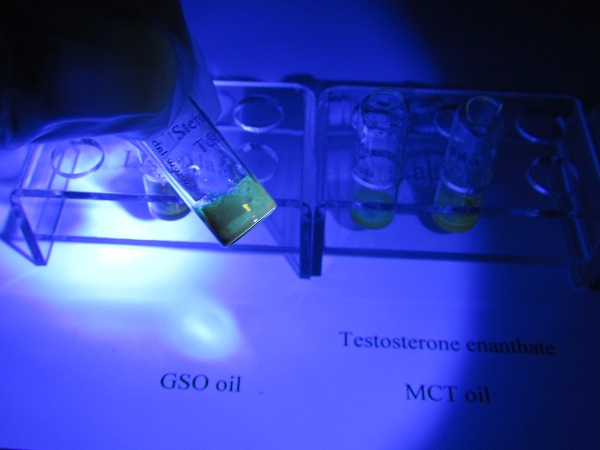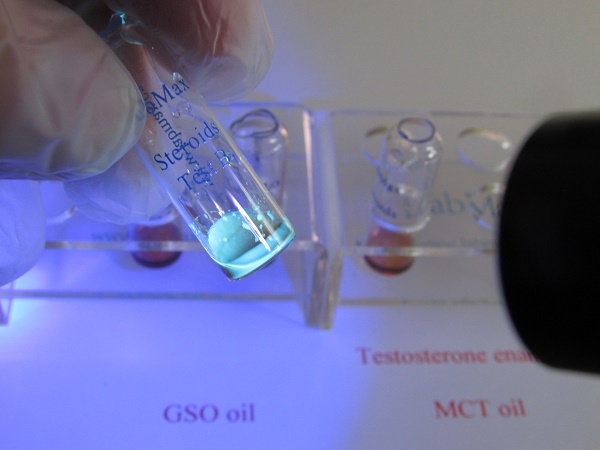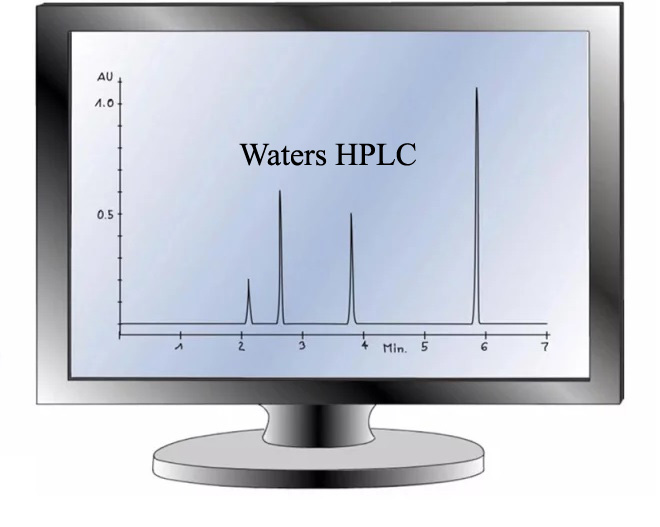Testosterone enanthate test. The best steroids test kit on the market.
Before you start the test, you will need a 365 nm UV light source. For example, you cannot use 395 nm light, as it is not UV light—it's like using red light instead of green light. LabMax has specifically designed and manufactured 365 nm UV lights to ensure compatibility with this test. Many of the so-called black lights sold on Amazon and other platforms are actually 395 nm lights.
Each vial contains 0.1 ml of test reagent. This is the amount depicted in the picture and the amount you will receive. There may be droplets scattered throughout the vial, so ensure to shake it thoroughly. Adding more reagent will not enhance the test's efficacy; in fact, filling the vial entirely with test reagent will render testing impossible. Before testing, shine UV light on Vial A; the test reagent will produce blue fluorescence. Then, observe the difference after adding your sample. No blue fluoresce means that your UV light is not 365 nm and you cannot do this test.During testing, you only need to add a small amount of oil or powder. Note that there is a small amount of test reagent settled at the bottom, so add only slightly less or approximately the same volume of liquid or powder. One or a few drops from a syringe are adequate. You will observe the test reagent turning red, and later, dark red, but this does not necessarily indicate the presence of hormones. To confirm the presence of hormones, perform the UV test. Use a 365 nm UV light and direct it towards vial B; if there is no fluorescence, it means there are no hormones present. Vial A will also fluoresce under UV light, so check it as well. Different fluorescence colors suggest the presence of something else or contamination with other steroids. The correct colors indicate a good quality product. In this example, we utilized two types of final products: GSO and MCT oil. Note the difference—GSO oil absorbs the fluorescence, but it remains visible, whereas MCT oil produces a very strong fluorescence. Both samples are 250 mg/ml, and in both cases, you will observe a blue-greenish fluorescence.
The type of oil used as a carrier does not affect whether the sample will produce fluorescence if a hormone is present. However, the intensity of fluorescence may vary depending on the oil because different oils absorb and reflect light in different ways.

Initial colors, dark red after dropping the samples.

Initial colors, dark red after dropping the samples.

Notice a little blue - greenish fluorescence in vial B under 365 nm UV light indicating presence of testosterone enanthate. It is sample with GSO oil. GSO oil is absorbing the fluorescence and it appears a little faint but it does not matter what carrier oil you use you will always get fluorescence if testosterone enanthate is present.

Sample with GSO oil under UV light.

The same GSO sample in dark room under 365 nm UV light, vial B.

Here is sample with MCT oil giving very bright fluorescence under 365 nm UV light vial B.

The same MCT sample in dark room under 365 nm UV light, vial B.

Raw powder in vial A and B, strong blue - greenish fluorescence under 365 nm UV light.

The same sample with raw powder in vial B in dark room under 365 nm UV light.
 Login Status
Login Status 









